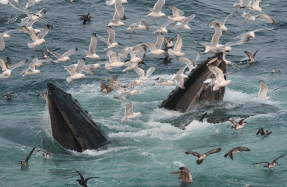NAMING RIGHTS


What’s in the name of a bird?
Since you’re reading a magazine about birds, you may be experienced enough to conjure in your mind’s eye images of Lazuli Buntings, American Avocets, or Summer Tanagers just by reading the names. But consider someone who is either new to birdwatching or entirely uninitiated. Chances are those names mean nothing to them. And that goes double for names like Cooper’s Hawk, Cassin’s Finch, and Anna’s Hummingbird — even though experienced birders know how common those species are. While a newcomer probably has some idea what a hawk, a finch, or a hummingbird is, a common name that refers to a human offers no clue about the bird itself. Just that it bears some person’s name.
The North American birding community began to learn the problem with this type of naming system in earnest in the summer of 2020, as a wider movement to address racial injustice took hold nationwide. While corporations from PepsiCo to Target to Disney to Chipotle began to change racially insensitive brand names, images, and other business practices, a group of birders started to push back online at the idea of eponymous species names — birds named after people. After all, many of the people for whom birds are named lived in the 1700s and 1800s and held racist views, owned enslaved people, or practiced eugenics.


Corporate America acted on its brands and practices after the murder of George Floyd and the protests that followed. The issues
You’re reading a preview, subscribe to read more.
Start your free 30 days





